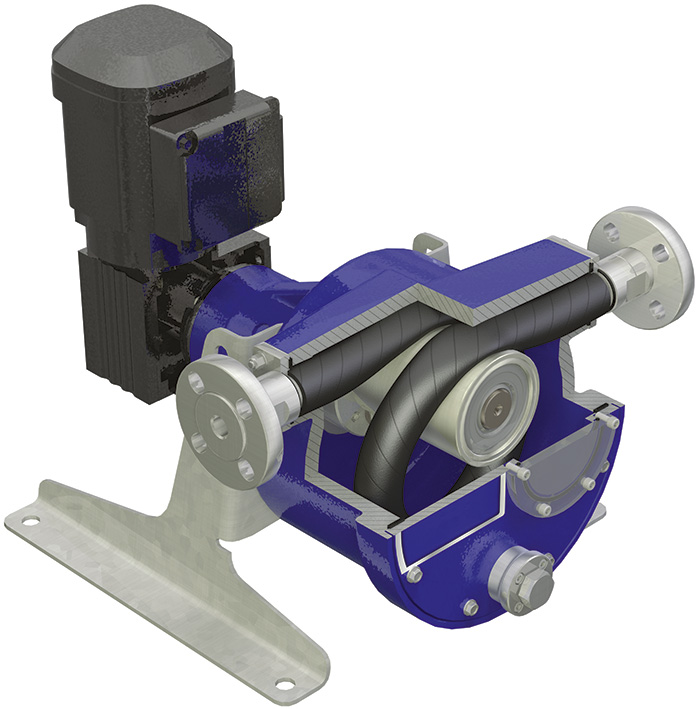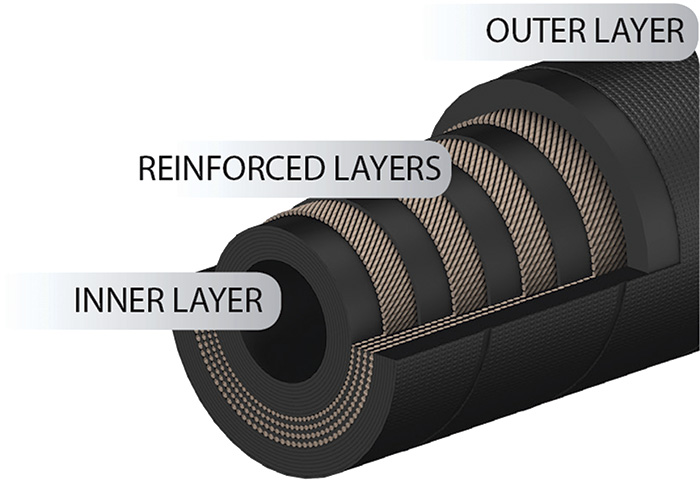It is not always easy to spot or understand the differences in similar products. For example: two ball bearings may seem to be the same in appearance and dimensions, but are they truly identical? Unless you understand what to look for, it would be easy to overlook subtle differences. These could include contact angles, internal clearances, cage material and groove design, to name a few. The same holds true when comparing hoses. The hoses and tubing used in certain pumps may seem like a typical industrial hose, but they have significant differences. These differences make the correct hose/tubing essential for the success, operation and reliability of the pump. One of the fastest growing pump designs being used today is the peristaltic pump. It is simple, efficient, reliable, accurate and suitable for a wide range of media. These pumps are also easily adapted to a change in fluids. Selection of the hose/tubing used in the pump does not have to be complicated and will not be if the requirements of the application and of the hose are understood.
Hose Requirements for Peristaltic Pumps
The outside diameter (OD) of a peristaltic hose is manufactured to a tight tolerance. To achieve this level of accuracy, the majority of the hose manufactures grind the hose or tubing to the final diameter. If the hose is oversized, it can cause excessive stress on the pump and gearbox, resulting in shortened hose, gearbox and pump life. An oversized OD can also result in higher energy usage. If the hose is undersized, the resulting reduced flow and backflow will lead to a reduction of hose life and unreliable pump performance. Figure 1. Peristaltic pump design (Graphics courtesy of Motion Industries)
Figure 1. Peristaltic pump design (Graphics courtesy of Motion Industries) Figure 2. Peristaltic hose cutaway
Figure 2. Peristaltic hose cutaway- The speed of the pump. The faster the pump runs, the more compressing and relaxing of the hose in a given period of time, resulting in shorter hose life. This is typically a one-to-one ratio. Also, the faster the pump runs, the more heat the roller/shoes will generate as they pass over the hose. These details must be considered when selecting the pump.
- Suction pressure spikes. This issue may be solved with a damping device.
- Discharge pressure spikes. This starts to get into the piping of the system. The solution may be as simple as a damping device, but it may require reviewing the piping design before offering a solution.
- Lubrication. Incorrect lubrication will result in shortened life of the hose and pump. Consult the manufacturer’s IOM for a list of all acceptable products, fill levels and recommended intervals between changing.
- Pump components/parts. The components used in these pumps are manufactured to tight tolerances. If they are oversized, you will experience too much compression resulting in hose damage and heat, and if they are undersized you will not get full hose closure resulting in reduced flow, back flow and poor pump performance. Personally, I would use only the OEM parts for these reasons.
Increasing Cost Savings
This year marks a milestone in my industrial sales career: it is my 40th year in this business. Pricing and availability still remain important factors in a customer’s decision, but today’s buyers expect much more from their suppliers. They need, demand and expect cost savings. Prices have already been driven to a level that is too low to allow meeting these objectives simply reducing the cost of a product. End users are looking for other ways to find cost savings. These include:- Reduction in procurement processing costs/ease of ordering
- Supporting inventories
- Product standardization
- Increased product longevity
- Improved product reliability
- Reduced energy costs
- Decreased unscheduled downtime
- Offering energy savings opportunities by performing plant audits (air, electrical, mechanical, filtration, equipment misapplications and inefficiencies, etc.)
- Asset repair tracking
- Training

